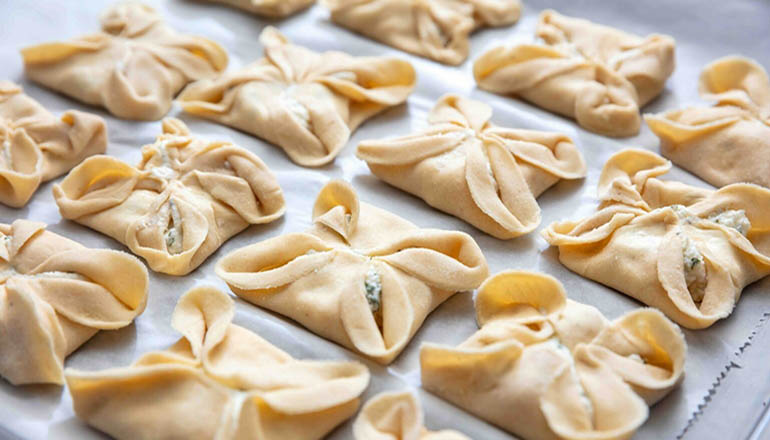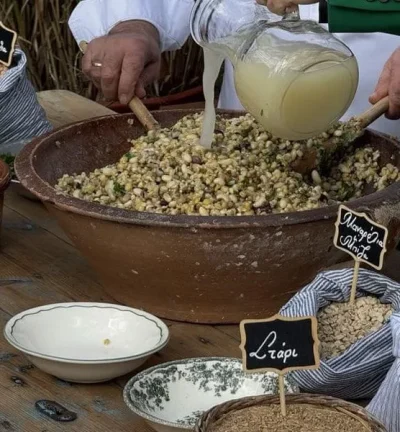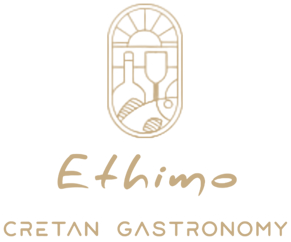Famous local flavors and PDO products of the province of Heraklion (Crete) that stand out!
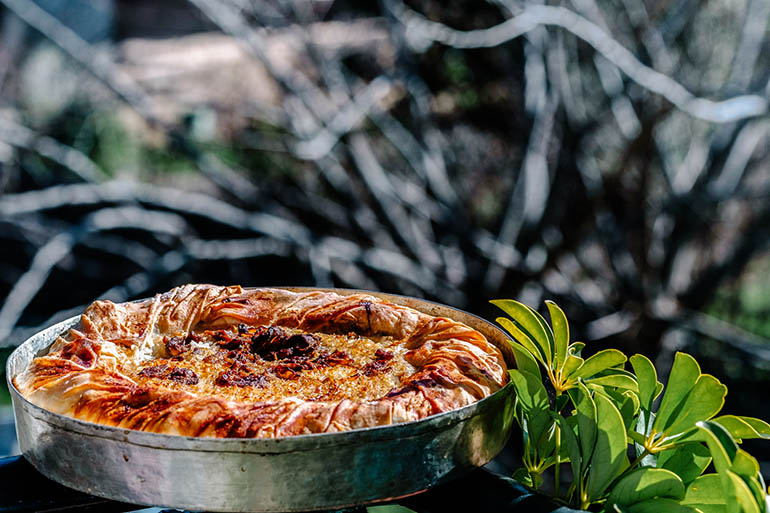
SOURCE: https://www.travel.gr/
In the great plain of Messara, defined by Psiloritis to the north and the Asterousia Mountains to the south, as well as in the plains of Heraklion and Kastelli, vast olive groves and vineyards, citrus fruits and numerous outdoor and greenhouse vegetables are cultivated that feed the whole of Greece all year round and are exported abroad, as well as grains.
The PDO olive oil and wine production areas (and raisins) hold the lead, while exotic crops in the south coast such as avocados and bananas have become dynamically established.
The microclimate of the area, as well as of the whole of Crete, determined by the constant alternations of the high mountains and the sea, has created a unique biodiversity ideal for the growth of native aromatic herbs, some of which are found only on the island.
The unique malotira, dittany, marjoram, sage, etc., which are now, in addition to their wild form, systematically cultivated for their excellent medicinal properties and are widely used in the island’s cuisine.
Of particular interest are certain dishes that are more technical in relation to simple Cretan cooking, such as Tzoulamas, Messaras, the carnival sweet and sour rice pie with meat and sugar, perhaps influenced by the Venetians, while in the repertoire of today’s Heraklion cuisine, Asia Minor’s Greek refugees introduced their own recipes, such as soutzoukia.
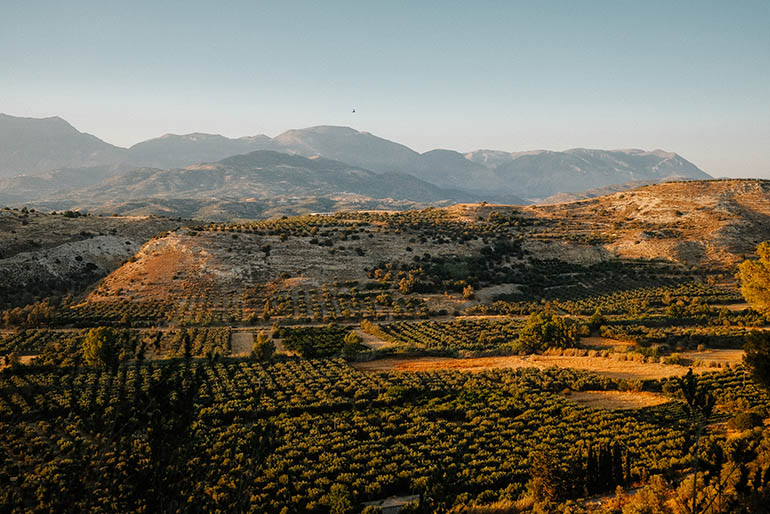
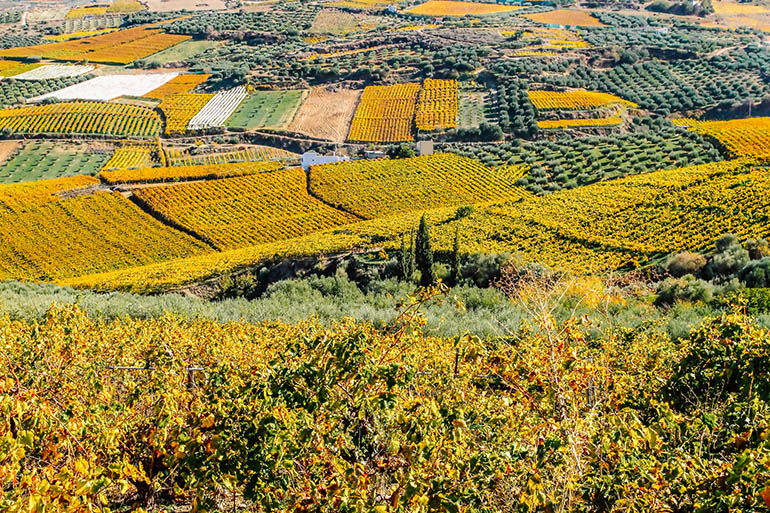
Chondros
Chondros, that is, coarsely ground wheat, and xinochontros, a delicious “pasta” made with coarsely ground and soured sheep, goat or goat milk, are combined with snails or eggplants or boiled in meat broth, giving a series of unique dishes. Fava beans or “koukofava” are another great dish, lamb and goats are also popular in Heraklion.
Cheesemaking has deep roots and among the many cheeses such as fresh xinomizithra or “athotiros” (dried mizithra), PDO Graviera of Crete is also produced, as is the case throughout the island. Sarikopites and agnopites, fried sweets made with honey, are part of the island’s culinary tradition.
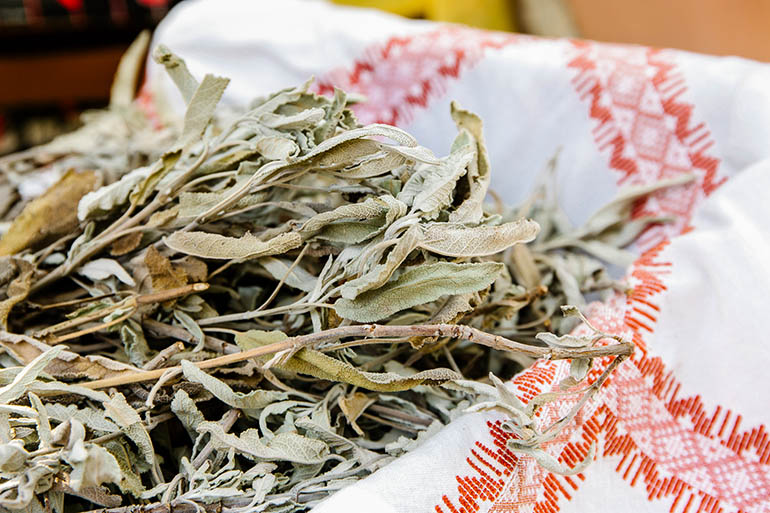
Malotira
The legendary “malotira” is a native herb within the unique biodiversity of the island. The “Cretan mountain tea” (Sideritis syriaca) is native to the majestic White Mountains, at an altitude of 800 -2.000 meters.
It has been consumed on the island since ancient times and is considered a real medicine for a whole range of diseases such as gastrointestinal disorders, sore throats, coughs and respiratory problems, infections, cachexia and weakness, nervousness and sleep disorders, since it has anti-inflammatory, antibacterial, and antioxidant properties.
Besides, the word “malotira” itself comes from the Hellenization of the Italian words “male” which means “bad” and “tirare”, which means to withdraw, to pull. Today, wild malotira is extremely rare due to over-collection and overgrazing, which has led to the organized organic cultivation of the plant.
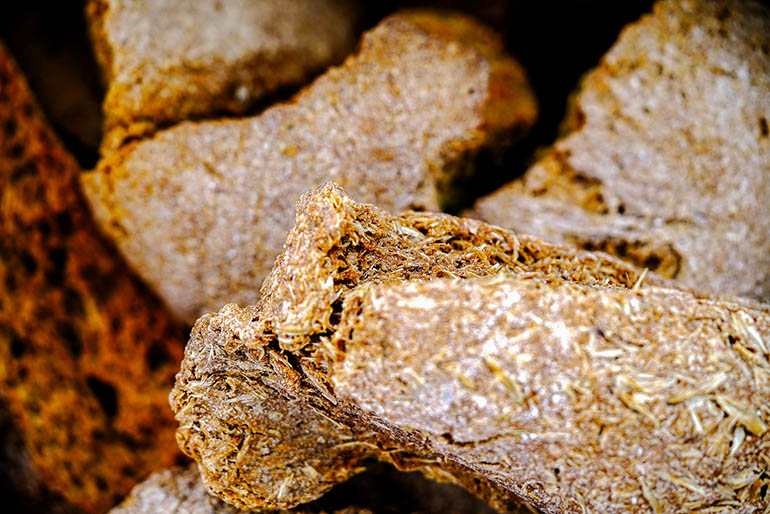
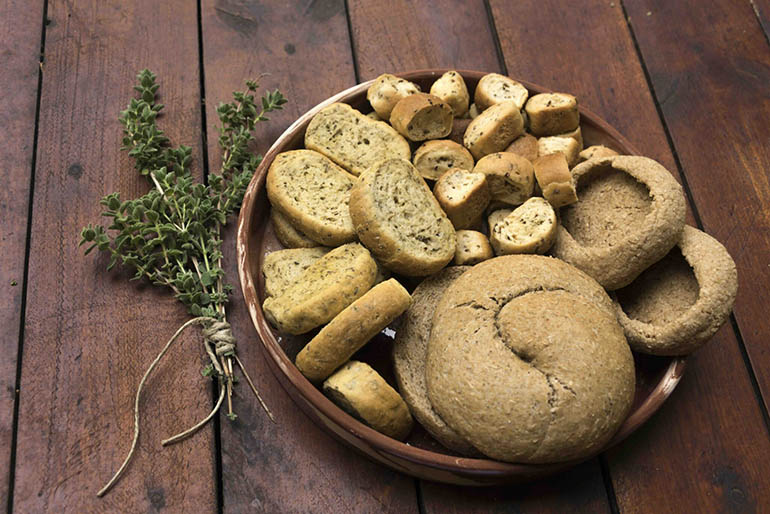
Unleavened rusk “Eftazymo” (Kastamonitsa, Kroustas)
A delicious rusk made from the most difficult bread to make. What gives it life is the foam that forms on the surface of coarsely pounded chickpeas that are left to ferment in water flavored with laurel until they become a porridge, the “kounenos”.
The difficulty in making it has created many beliefs around it. It must be kneaded in secret from the neighbors and the men of the family, it must be watched by the housewife constantly, no words of praise should be spoken about it while it is being made because it is being looked at.
Its name, which one could easily think of as meaning that it is kneaded seven times, is claimed to actually come from the word “autozymo” which means that it rises without the help of yeast or leaven. The word then became “ftazymo” and then eftazymo (since the number seven has its own magical meaning).
All of eastern Crete is famous for its ftazymo, but two places hold the top spot: the village of Kastamonitsa in the Municipality of Minoa Pediados in Heraklion and the village of Kroustas in the Municipality of Agios Nikolaos in Lassithi, where celebrations are organized in its honor every August.
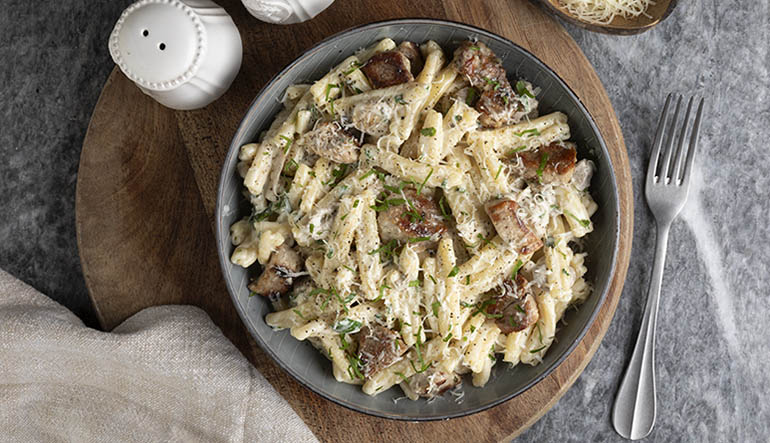
Skioufihta
The delicious Skioufihta are traditional handmade pasta, made one by one with a dough made from flour, olive oil and water.
Their name comes from the word skiofizo which in the Cretan vernacular means to twist. They are not rolled out with a rolling pin into a sheet but are made with small pieces of fresh dough after it has first been formed into strings.
Each piece (this is where the craftsmanship begins) is pressed in the middle with the fingers, making a small indentation while pushing at the same time so that the dough twists. They are traditionally served with hot fresh butter or stakovoutyro and sprinkled with grated dry mizithra (“athotyro” in Heraklion).
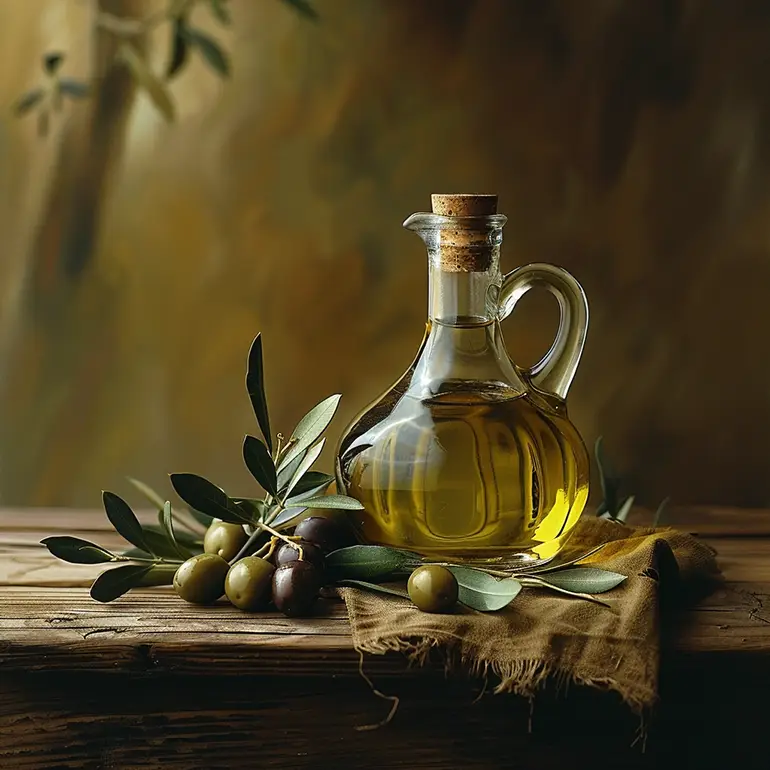
Olives
The vast olive groves of Heraklion cover over 46 million acres (2018 data) and produce extra virgin olive oil and delicious table olives, mainly of the Koroneiki olives variety.
Among the olive groves of the region, three PDO areas stand out: PDO Messara, PDO Viannos, PDO Peza and PDO Archanes Heraklion Crete. Between the villages of Agioi Deka and Mitropoli of Messara, lies the monumental Gortyna Olive Grove, which includes several centuries-old olive trees of the Chontrolia variety that previously dominated the lowlands (today it has been replaced by the Psilolia).
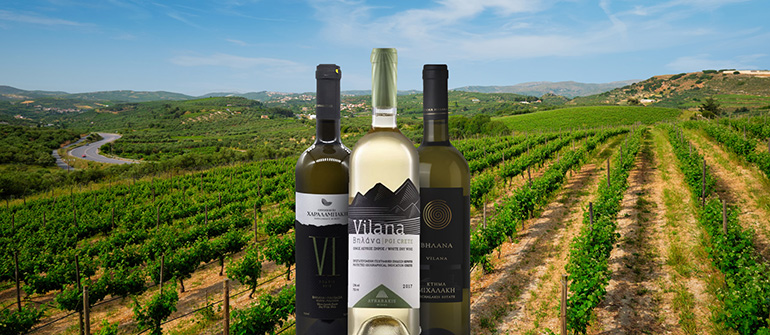
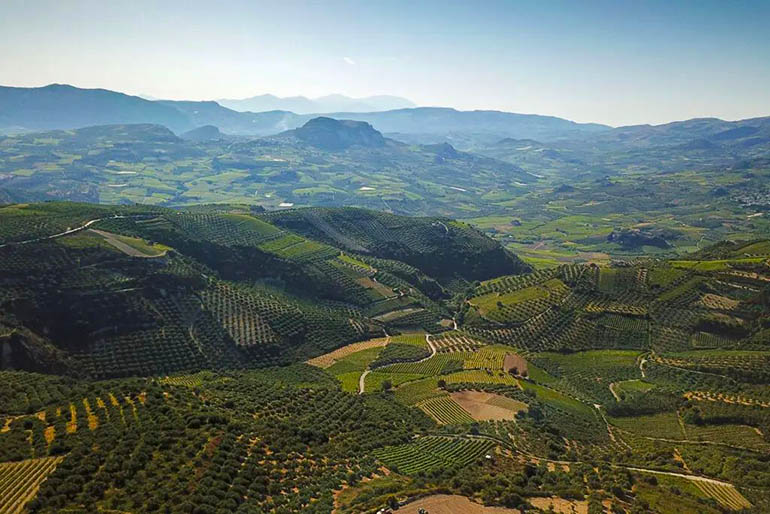
Wine
Heraklion is home to the most developed vineyard in Crete (⅔ of the wines produced are PDO) with five PDO areas: PDO Archanes, PDO Dafnes, PDO Peza, PDO Chandakas and PDO Malvasia Chandakas.
The main white varieties are Vilana (which produces fruity refreshing wines), the local varieties Dafni and Plyto which a few years ago had reached the point of extinction and are now making a dynamic comeback, Muscat Spinas, Athiri, Thrapsathiri, Malvasia Aromatica and other international varieties.
The main red varieties not only of Heraklion but also of the whole of Crete are Kotsifali and Mandilaria while other red varieties are Liatiko and the French varieties Cabernet Sauvignon, Merlot Syrah, Grenache Rouge, Mourvèdre, Carignan.
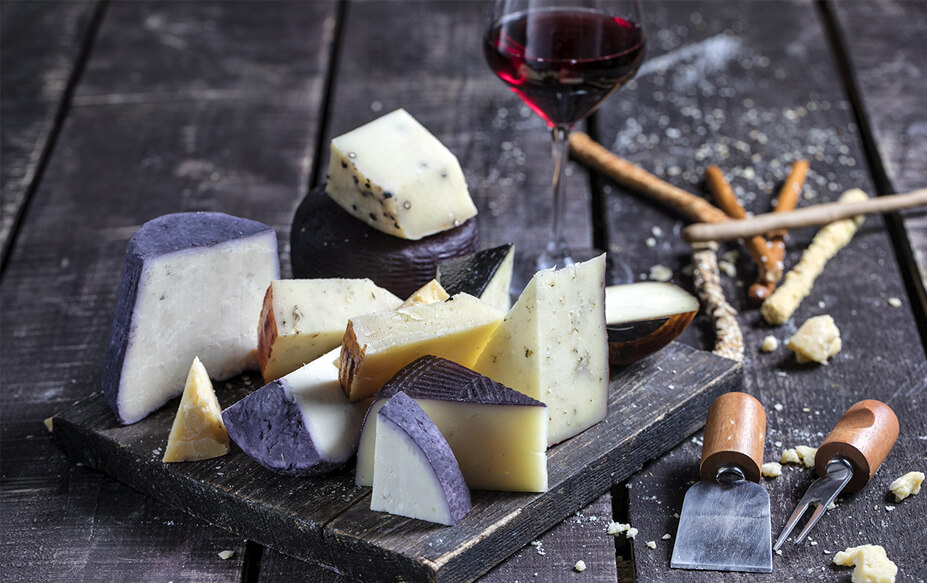
Gruyere
The famous Cretan Gruyere PDO, one of the highest quality and most beloved cheeses in Greece.
In Crete, it seems that cheese was first made at the Agricultural School of Gortys, in Heraklion during the first decades of the last century. The new cheese conquered not only the Cretans but also the whole country with its wonderful taste and aroma.
It is a hard yellow cheese made from sheep’s milk to which up to 20% goat’s milk can be added and with a maturation period of at least 3 months.
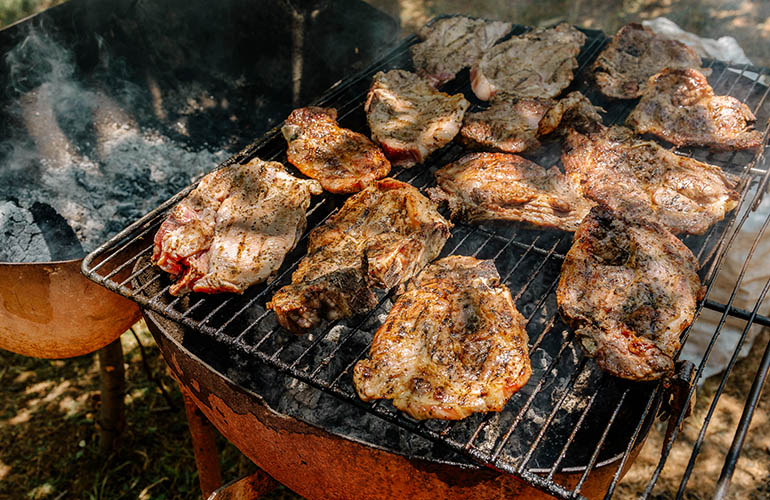
Local recipes of Heraklion area (Crete)
Kalitsounia with fennel or cheese
Fried pies in round or square shape with a filling of aromatic fennel, alone or in combination with other greens such as spinach or chard. They are also made with cheese (xynomizithra).
Ofto (or antikristo meat)
Legendary, ancient way of roasting large pieces of meat, usually Zigouri. A whole ritual, as the meat is set by connoisseurs in front of an open fire that burns in a pit and is slowly roasted for hours until it becomes a delight. In the past, the meat was fixed on wicker rods and stones, then on cement blocks, in recent years on metal rods.
Spaghetti with “athotyros”
Spaghetti boiled in meat broth and sprinkled with a generous amount of “athotyros” is the food of weddings and celebrations, as is the wedding pilaf in Chania and generally in western Crete.
The meat is mainly zigouri but also goat and chicken. The difference is made by the abundant “athotyros” with which they sprinkle it. “Athotyros” is the name by which dry and salted fresh mizithra or anthotyros is found in eastern Crete and is a semi-hard, salty cheese that adds flavor to everything.
Caprico (Galatas, Thrapsano)
Caprico is the boar, the male pig, which is cut into very large pieces, heavily salted and then traditionally baked for hours in a wood-fired oven, without any liquids, until it becomes honeyed and becomes a wonderful appetizer.
It is common in the inland areas of the prefecture of Heraklion, in Thrapsano, in Galatas, which is made on the first weekend of July, and in Voni, which is made on the feast of Agia Marina.
In some versions, it is marinated overnight in salt water and vinegar.
Lychnarakia (or Kaltsounia fyndis)
The most beloved Easter sweet treat, is now available all year round. Its phyllo is somewhat plump and is prepared without yeast, which takes time to rise and puff up.
It is made in various shapes, the most famous being the “lychnaraki” where the dough is pinched around to form little noses like the melitinia of Santorini or in a square shape and baked in the oven
The filling is made with sweet mizithra and sugar and is flavored with cinnamon, mastic, mint (varsamo), lemon zest, etc.
Tzoulamas
A peculiar sweet rice pie that also contains chicken meat or chicken livers or liver from another animal, as well as raisins and/or sugar and nuts. The name is Turkish and there is even a Turkish sweet with the same name, but it was usually eaten in the villages of Messara / Messaras at Carnival and before the Ottoman occupation.
Perhaps this is a Venetian influence.
Messaritiko with eggplant
A nice summer dish with eggplant, potatoes, tomato sauce, in layers, and a mixture of cheeses.
Sarikopites
Twisted fried pitoulas in a characteristic knitted shape reminiscent of the Cretan headscarf. The phyllo is thin with lots of olive oil that makes it crispy and tsikoudia and the filling is sour cheese.
Spanakopites are served with honey.

“
The microclimate of the Heraklion area, as well as of the whole of the island of Crete, determined by the constant alternations of the high mountains and the sea, has created a unique biodiversity ideal for the growth of native aromatic herbs, some of which are found only on the island.
travel.gr
“

